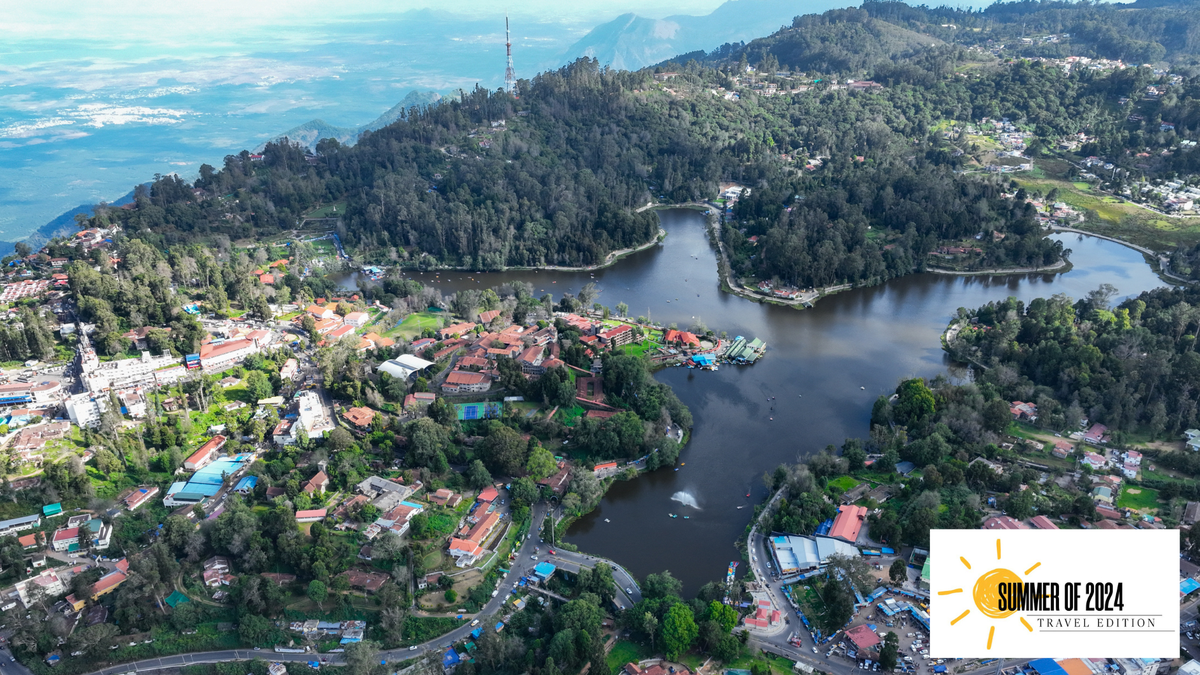
It is 11 a.m. in Kodaikanal, and I am stuck in traffic at the junction near the town’s star attraction — the lake. Behind me, rows of cars, buses and vans wait impatiently, honking. I look to the right where a trio of aerator fountains, one of the features of the recent ‘beautification’ plans, forces water up 20 feet in the air where it falls back in an arc. The honking seems to be synchronised to each thrust and fall, like a musical fountain.
On my left, a lady in the car next to me rolls down her window to chat. It is her family’s second day in Kodaikanal, she says, and they have not seen much. “We have spent most of our time stuck in traffic. This is worse than a city.” I nod distractedly. I am late for a dental appointment, and I wonder if I will reach in time. As it turns out, I will not, but my frustration dissipates when I hear about a medical emergency in our neighbourhood that morning. The patient was stabilised at the local hospital and taken down to the nearest hospital in Theni, 80 km away, down the only ghat road, but it was too late to save him.
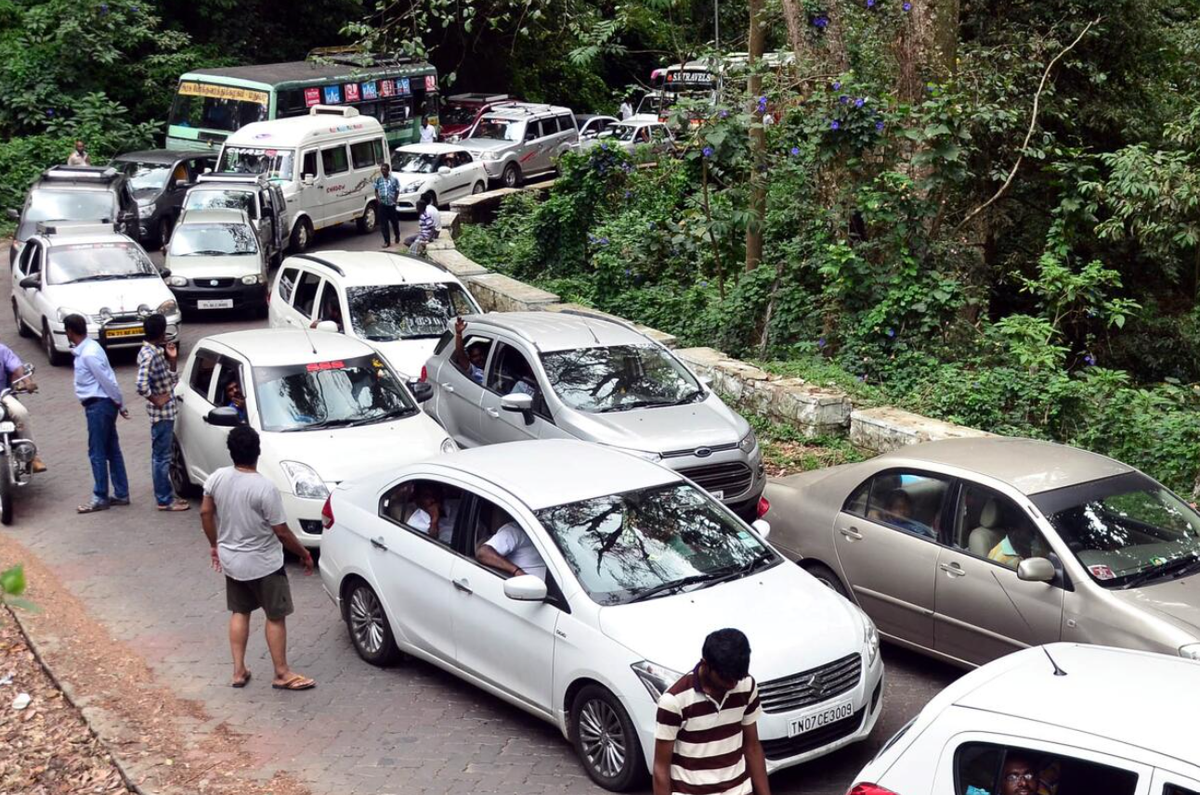
Traffic snarl on the roads
| Photo Credit:
G. Karthikeyan
On a day like this, many things may happen, simultaneously. A minister finds the heat in the plains unbearable, and decides to drive up to Kodaikanal with the inevitable entourage of security cars, local and district level representatives and favour-seekers. Potholes and waste piles are hurriedly sanctified with bleaching powder. Additional security is needed as the town is already teeming with tourists, and a posse of trainee policewomen fitted with new khakis is rushed up the ghats to manage traffic. A young barefoot trainee (her new shoes are too tight, she says later) is flailing her arms about wildly, adding to the chaos, and a car swerves too close, running over her foot. The driver defends himself as an angry crowd gathers, saying he was distracted by her attire. More traffic piles up and the crescendo of honking reaches a desperate pitch. The ambulance finally arrives to pick up the injured policewoman who is sitting by the side of the road, resting her swollen foot.
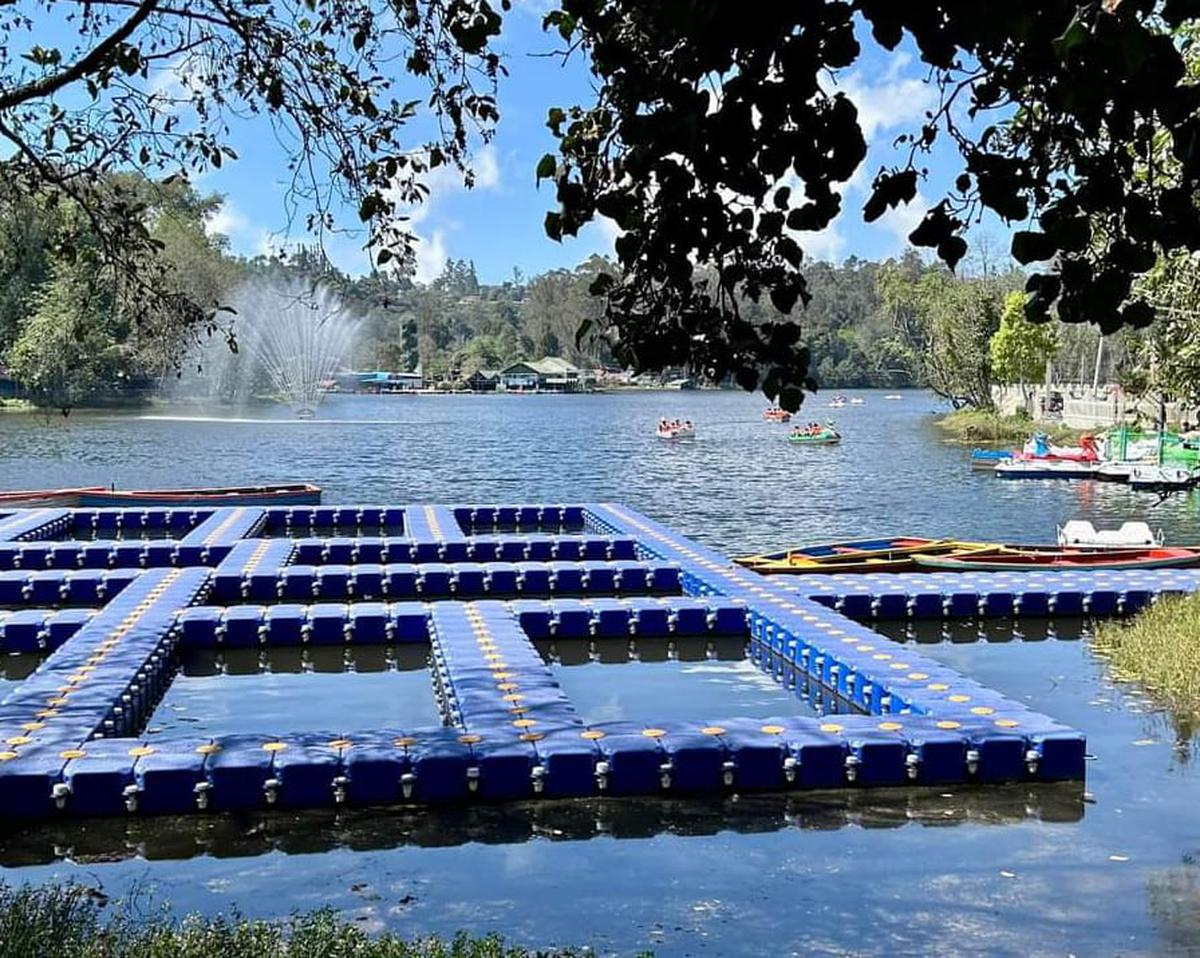
A floating dock, one of the ‘beautification and development’ projects. But with no railings, no one is using it
| Photo Credit:
Lathika George
Later, drone footage shows that the ‘jam’ was precipitated by a large-chassis tourist bus wedged on the narrow ghat section 20 km away, as thousands of cars and more bus-loads of tourists waited anxiously. Some were coming up, others leaving. “Just another day in paradise,” as the song goes.
While it is agreed that the hills should be accessible to all, it is clear that if urgent measures are not taken to control tourism, these beautiful mountains will become just another tourist trap. Local residents who see their town being steadily degraded insist that it is time to find solutions, without delay.
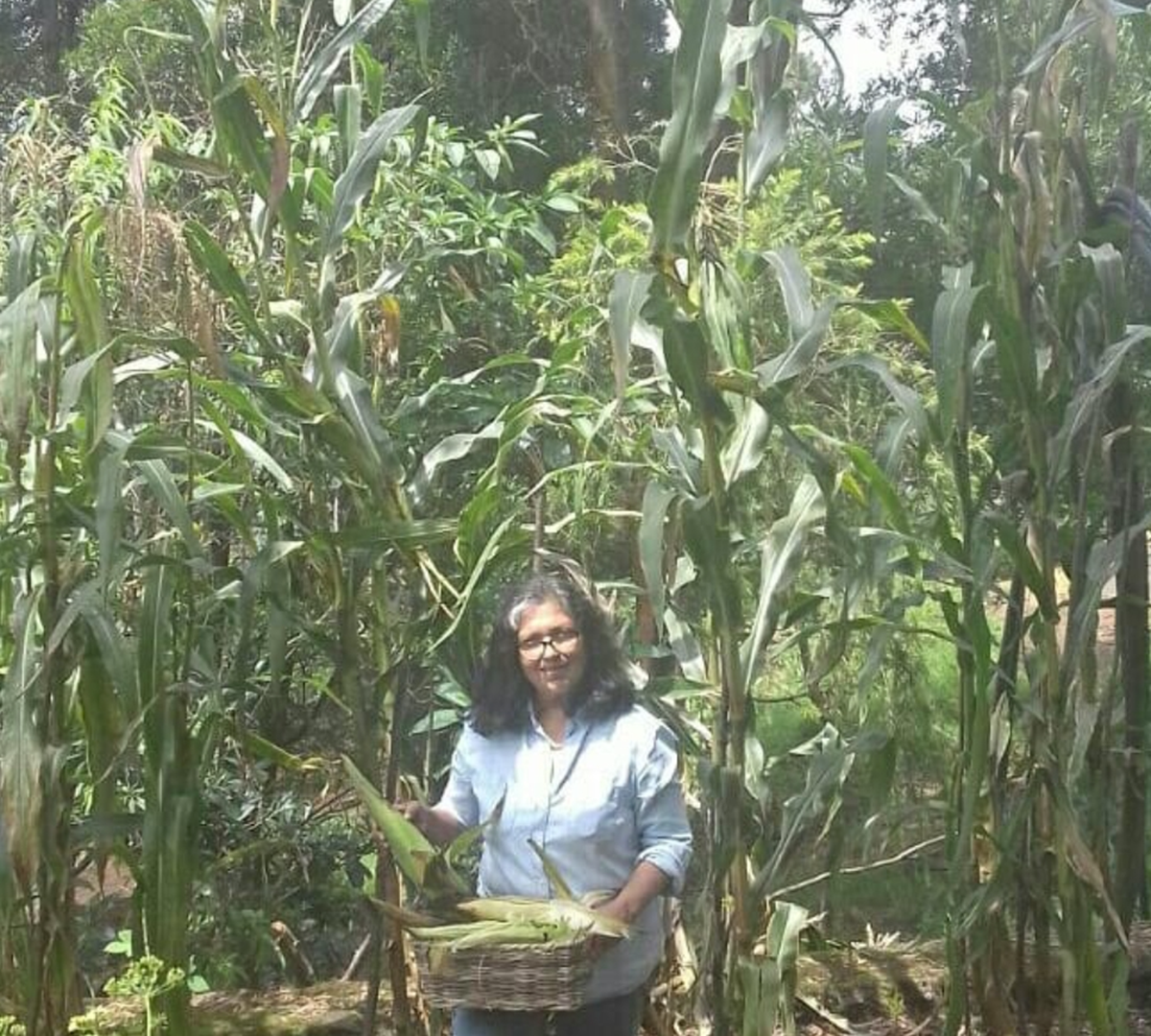
Lathika George in her organic garden in Kodaikanal

A pan-India problem
Some years back, a yoga teacher I met in Rishikesh told me, “The Himalayas are collapsing, even as we speak.” It was not a doomsday prediction; we had been discussing the frequent landslides in these mountains and the devastation they bring in their wake. Hours later, I witnessed this personally en route to the Valley of Flowers, as we waited with carloads of pilgrims and tourists in front of a cascade of mud and boulders. After an hour, we realised it showed no sign of abating and joined the posse of cars moving slowly through falling rocks and stones.
Following the more disastrous landslides in the region each year, in 2023, the Ministry of Environment, Forest and Climate Change asked the Supreme Court to direct 13 Himalayan States to conduct surveys to assess the ‘carrying capacities’ of towns in these fragile ecosystems. It recommended a detailed study by a panel of experts in the fields of hydrology, environment and climate studies, as per the guidelines of the GB Pant National Institute of Himalayan Environment.
Landslide at 13th hairpin bend on the Kodaikanal – Palani Ghat Road
Earlier, in 2018, the National Green Tribunal had directed the Union Ministry of Urban Development and Union Environment Ministry to undertake similar studies in all States and Union Territories. As reported by Down to Earth this February, till now only Aizawl in Mizoram has completed a carrying capacity study.
‘Carrying capacity’ is a broad term that covers many aspects and features of a region, indicating the maximum number of visitors to a destination at a given time, with least damage to the environment and cultural landscape. Ideally, it should be calculated along with the master plan of each region, while assessing its resources. Which brings up another reality — that there are very few town planners for the hills, with experience or understanding of the soil, vegetation and topography of the region.
Nevertheless, the Madras High Court has now recommended similar carrying capacity studies for the hill stations of Udhagamandalam and Kodaikanal in South India, with the aim of regulating tourist entries.

Kodaikanal is struggling
Kodaikanal is just one of the numerous hill stations in the Western Ghats. Varying in height, accessibility and popularity, they share the same complex problems that are compounded by unregulated tourism: narrow winding roads up steep inclines, poor infrastructure, limited medical care and negligible parking space. Tourism is just one of the many issues that plague the hills.
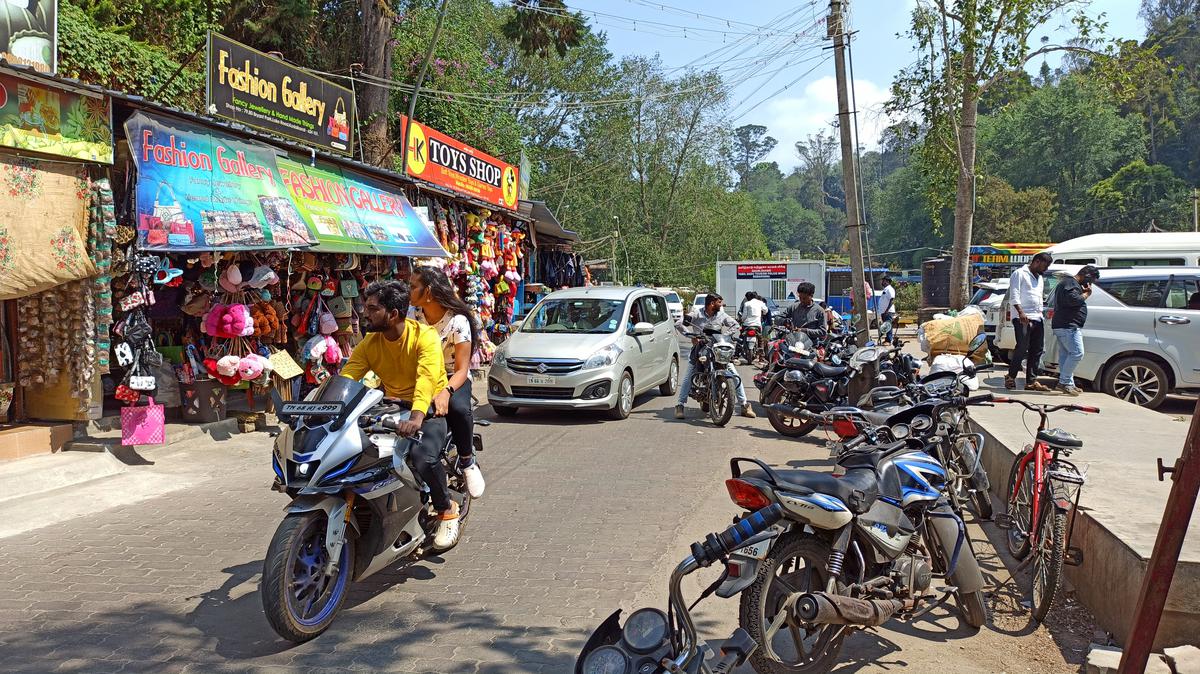
Tourists on a weekday in Kodaikanal
| Photo Credit:
Azad Reese
At the height of the summer season, Kodaikanal can get up to eight lakh tourists each month, according to the town tourism office. While there are plans to widen roads and build large parking spaces in designated areas, the high footfall highlights other issues that come with excessive tourism: sewage, sanitation and acute water shortage.
This floating population also leaves behind a trail of garbage that an overstretched and inefficient waste management system struggles with. Where, for instance, does the garbage go? On an average day, 20 metric tonnes of unsegregated waste are taken to the town dump site bordering a reserve forest, 15 km away, adding to the mountain of garbage waiting to be processed.
An overstretched waste management system plagues Kodaikanal
| Photo Credit:
Karunakaran M.
Sandeep Nanduri, director of tourism, Tamil Nadu, admitted in an interview with The Hindu, “This sudden growth presents a few challenges for the State.”
He stressed the environmental impact and the strain on infrastructure when tourist footfalls are not evenly distributed. Kodaikanal, situated in a wildlife sanctuary, has three large waterbodies, marshes and streams that feed into a valuable ecosystem which provides water to cities in the plains; every activity needs to be monitored.
The Manjummel effect
Since the release of the hit Malayalam film Manjummel Boys, there has been a surge of tourists to Kodaikanal and the Guna caves in particular. According to reports, in February alone, the caves saw a footfall of over 1 lakh visitors, in spite of it being off season. Before the film, the average monthly turnout was around 14,000. “The movie was shot in the pine forests on the 12-mile round route. Earlier, it would take people around 25 minutes to complete the full round. Now, it takes three to four hours to finish, with the traffic inching along,” says Iti Maloney, a long-time resident and director of the Center for Environment and Humanity at Kodaikanal International School.
— Neha Vineet Mehrotra
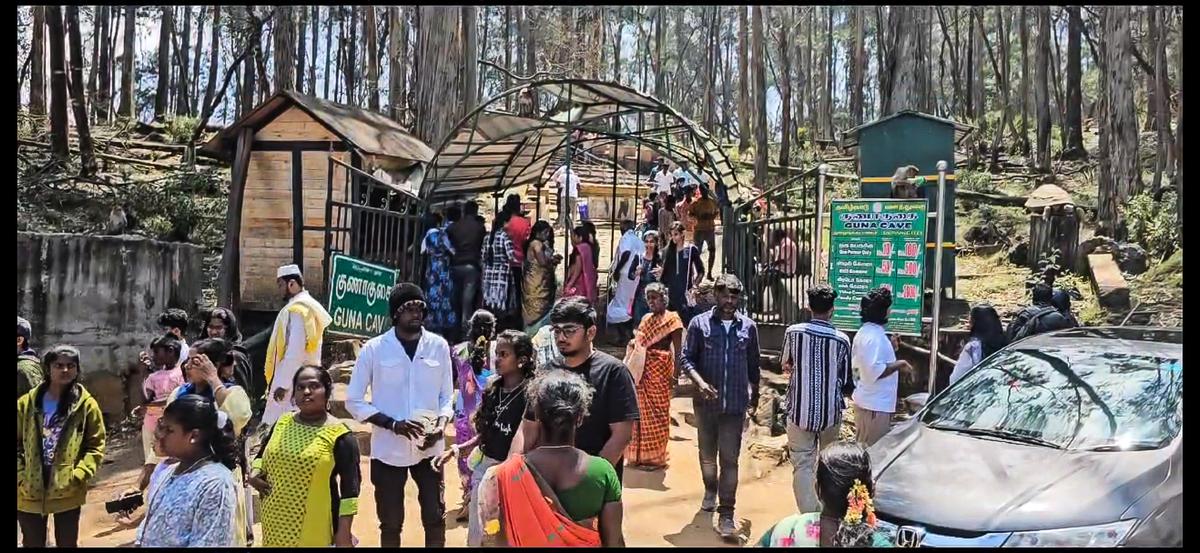
Tourists at Guna Caves
| Photo Credit:
Azad Reese
Bring back the e-pass
Kamini Vignesh, an ecologist and cake artist says, “Between waste management, overcrowding, illegal construction and pollution of all forms, the pressure on Kodaikanal and the surrounding ecosystem is enormous. There is a PIL in Madurai court right now asking for relief for many of these issues. We, as a group, are following the proceedings closely and considering our options to get involved.”
Earlier this month, she joined a group of residents in a protest march to highlight the traffic situation, demanding solutions before the summer season. As temperatures soar in the plains, hordes of tourists will continue to come up to the hills to get some reprieve. Where will everyone go? Will there be space, water, medical care and toilet facilities for the lakhs of visitors who will pay a fee at the town’s toll gate for a brief holiday in a cooler climate?

Kamakshi Narayanan, a homeopath and long-time Kodaikanal resident, believes, “It is time to cap the entry of tourists, and restrict it to a sustainable number, by implementing the e-pass system. Of course, the carrying capacity must be assessed before that.”
Residents remember the ‘e-pass days’ of COVID-19 fondly, a return to life as it was 30 years ago. “Clean, empty roads, the lake and streams devoid of the floating carpet of garbage at the edges, wildlife venturing into residential areas — not just the bison who have already made their home here.” Controlled tourism could also ensure a steady stream of tourists into the town, and regulate income for local businesses through the year.
Tourists at Silver Cascade near Kodaikanal
| Photo Credit:
Karthikeyan G.
Too many homestays
Tamil Nadu Tourism’s 2022 guidelines for homestays and B&Bs (bed and breakfasts) — which, for the first time, put down the process to register and operate such establishments — has led to a surge in the Nilgiris. On the one hand, entrepreneurs such as Ashish Gupta of LuxUnlock, a villa rental company that connects travellers to luxury vacation homes in the hills, insists it is a sustainable business model. “We are using existing houses and inventory, and adapting them for tourists. So, in a way, we’re preventing the increase of new hotels and hospitality infrastructure, which adversely impacts local resources,” he says. On the other hand, environmental activists such as ‘Elephant’ G. Rajendran express their apprehension about a proliferation of ‘illegal’ resorts and homestays operating in ecologically sensitive areas. “It appears that officials are also colluding with violators,” Rajendran said in a petition. In the last few months, the Department of Tourism has stopped issuing homestay licences, says Anita Devaram, vice-president of the Nilgiri Homestay and Bed & Breakfast Association, largely in response to Rajendran’s ongoing case in court demanding no new homestays in the Nilgiris.
— Neha Vineet Mehrotra
‘Real’ development needed
Tourism offers undeniable benefits for improving mountain livelihoods, but relying on just this source of income leads to neglecting other potential opportunities. Unfortunately, development in these regions continues to be tourism-centric. Multi-floor buildings and mass tourism ventures have no place in the mountains, nor do the spate of artificially created beautification projects such as toy trains, elaborate water sports facilities and amusement parks, which serve no purpose in an already beautiful environment except to sell tickets and gain revenue. Real development must explore other avenues that are less destructive and more compatible with mountain life. Hill communities need to be empowered to take responsibility for the preservation of natural resources, and to fulfil their role as stewards of the mountains.
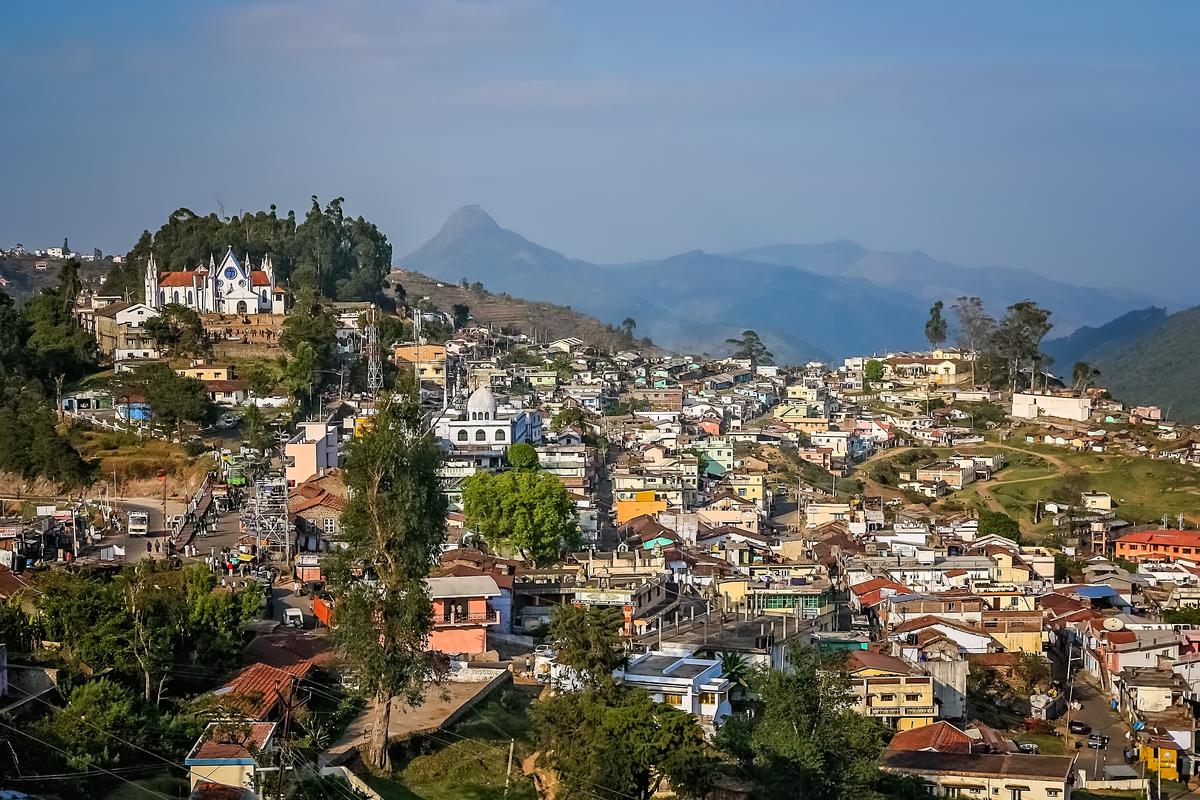
Aerial view of Kodaikanal town
| Photo Credit:
iStockphoto
On another foray into town recently, I pass a large municipal garbage bin spewing a mix of food waste, packaging material and empty bottles into a tiny stream still attempting a meagre flow. Nearby, young students of a local school have donned gloves, to pick up soggy chip packets and empty beer bottles that will be segregated later. In a forest nearby, a similar clean-up operation is underway, this one by a local citizens group called Solaikurivi who meet every week to clean up the shola forests.
Sky island under threat
The shola forests in the Western Ghats form one of the ‘sky-island’ systems of the world — “isolated mountains surrounded by radically different lowland environments” (as defined by the U.S. Forest Service). But in the last 40 years, Palani Hills, which runs through Tamil Nadu and Kerala, has lost around 80% of its grasslands and shola forests. “At first, this was due to invasive species. But now, the new challenges are agriculture and tourism,” says Iti Maloney, director of the Center for Environment and Humanity at Kodaikanal International School. “Currently, there is good protection of forest land, but the buffer zones between forest, agriculture and commercial land are not so clear. So, encroachments are happening everywhere.” There have been some attempts at restoring the original ecosystem, mostly helmed by forest guards in the Kodaikanal Wildlife Sanctuary. “But for lasting change, there needs to be strong inter-department collaboration. The municipality needs to talk to the tourism department, and they in turn have to talk to the forest department. If they join together and create a sustainable tourism plan, it will be a win-win situation,” says Maloney.
— Neha Vineet Mehrotra
While it is heartening to see citizen groups take up the responsibility and stewardship of their environment, it is an uphill task if not supported by the government. For now, the tourist carrying capacity assessment may be a step in the right direction, leading to a more pleasant experience for tourists and an easier life for residents of mountain towns. It must be followed up with swift and focused action.
An environmentalist and organic gardener, the author writes about food, design, travel and agriculture.
Source | Powered by Yes Mom Hosting






